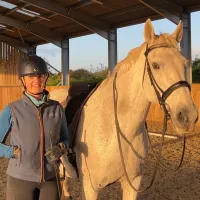Spooky horse transformations
Join the 000's of riders who have
fallen back in love with riding their
confident and connected horses
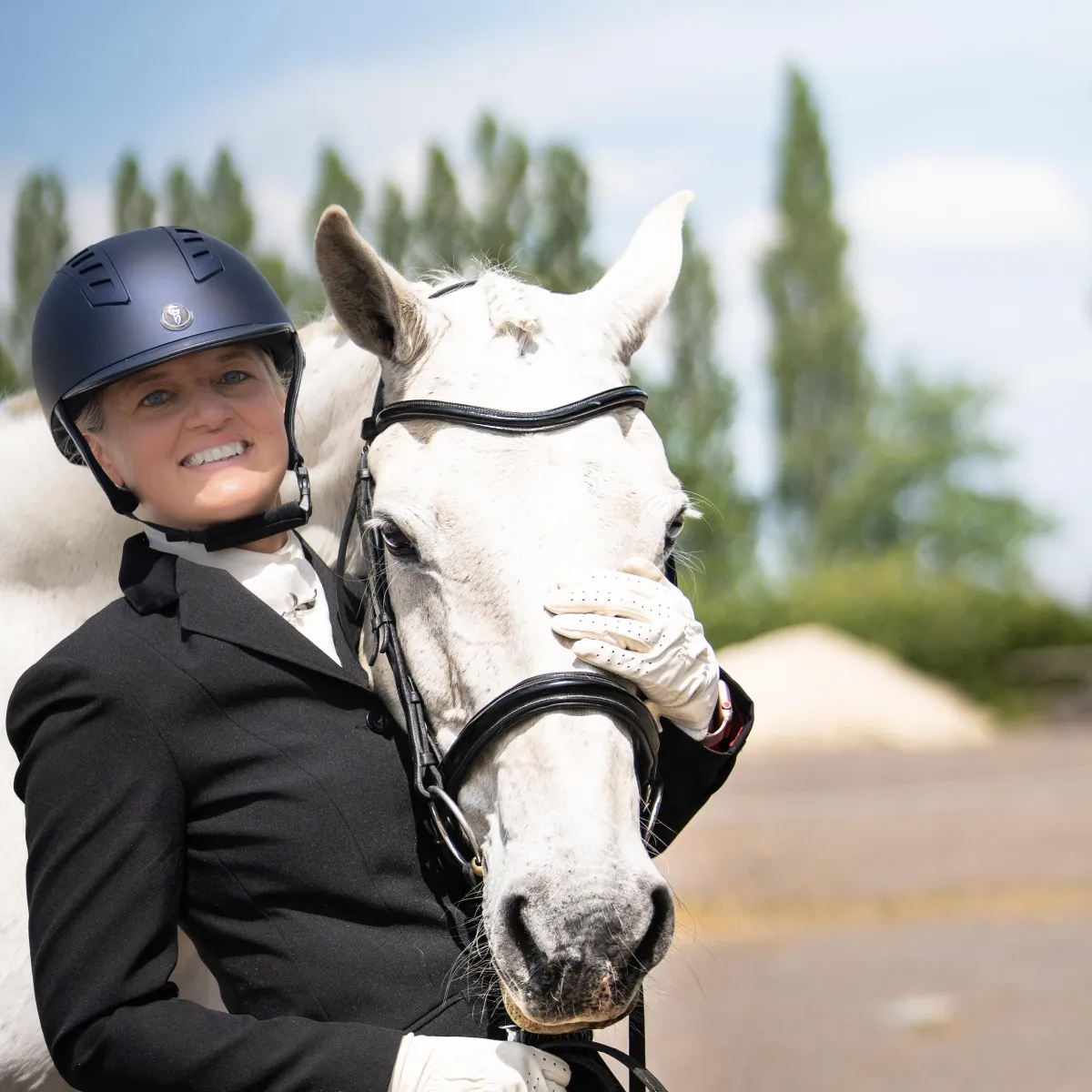
Lyla Cansfield
Hi, I am Lyla and I believe that success with horses comes from understanding and connection.
I specialise in providing a unique blend of horsemanship principles alongside sensitively applied traditional ground and ridden techniques for riders of any discipline to achieve transformational results with their horses.
I believe that horses are happier and will respond better to training in any sphere when they understand your expectations and you understand theirs.
Enquire now for the complete spooky horses course
Ready to make a start falling back in love with riding your horse?
Tap the button below to find out more...
Services

Online Coaching
Online courses with coaching options, you choose how much support you want to achieve your goals

1-2-1 consultations
Consultations and problem solving sessions, online or live at your yard
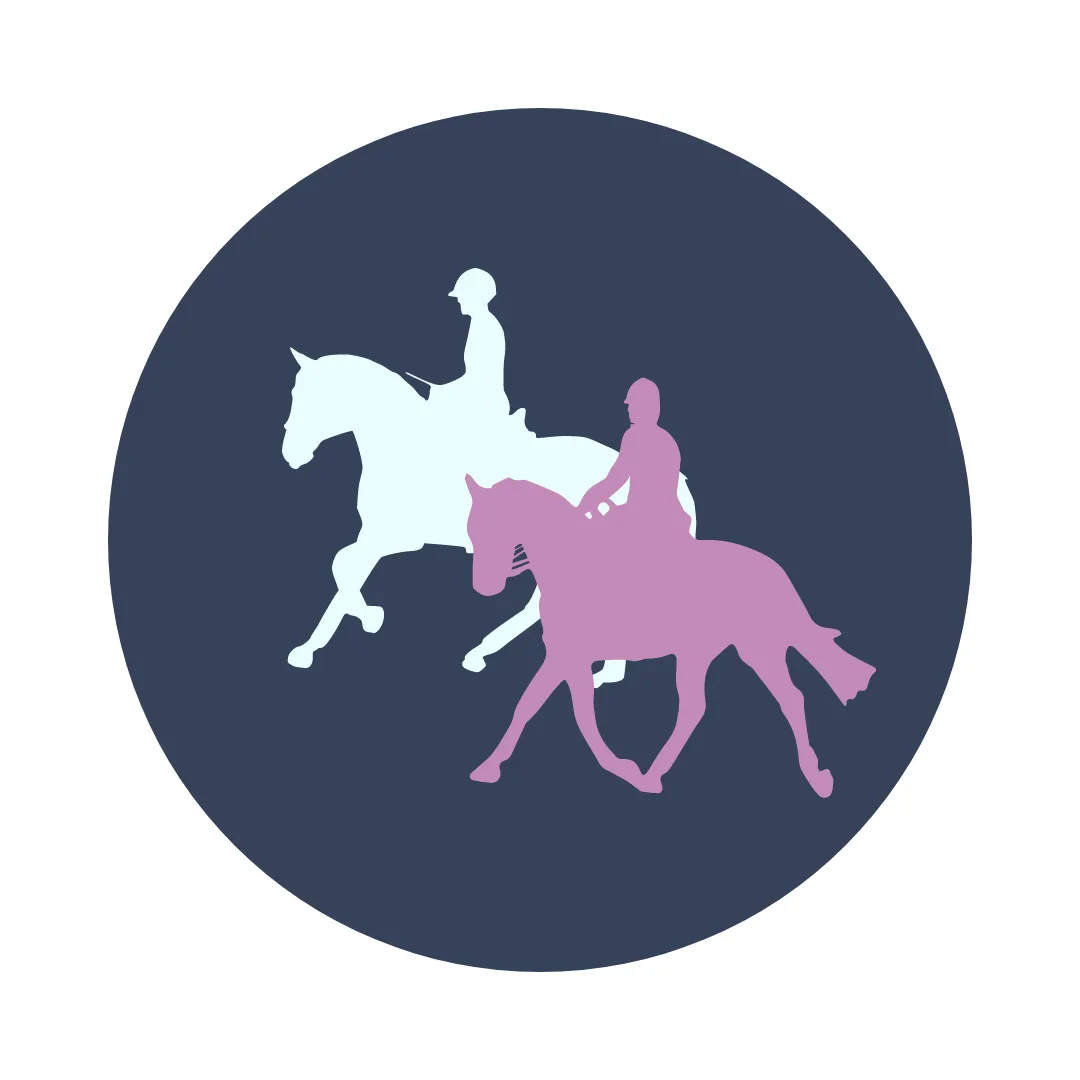
clinics & Events
Summer camps and clinics in the UK and internationally
CLIENT RESULTS
Happy Clients
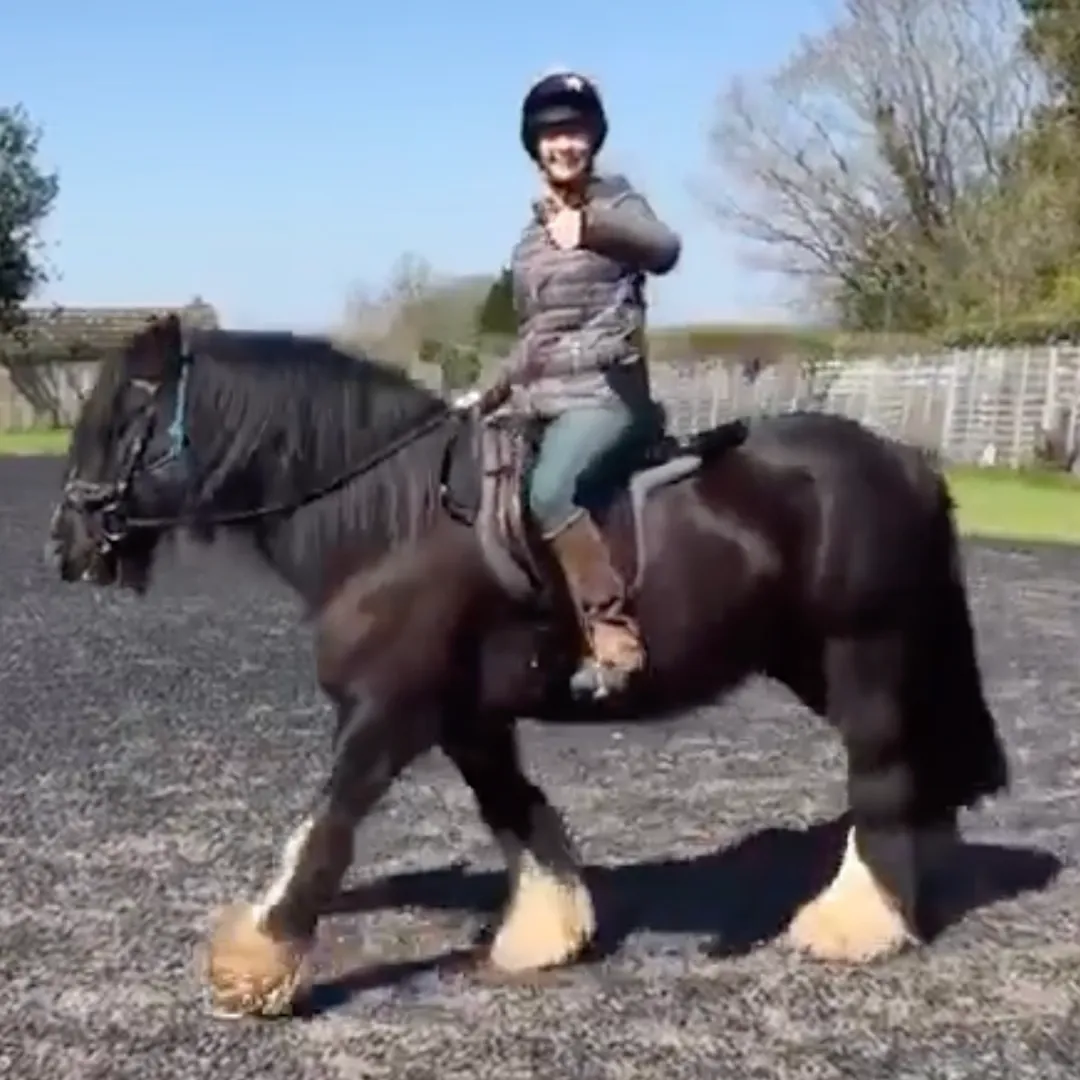
"I am much happier to ride my horse now that I understand when he is relaxed and connected. How to read his body language from the saddle and what to do if he becomes anxious."
Helen & Troy
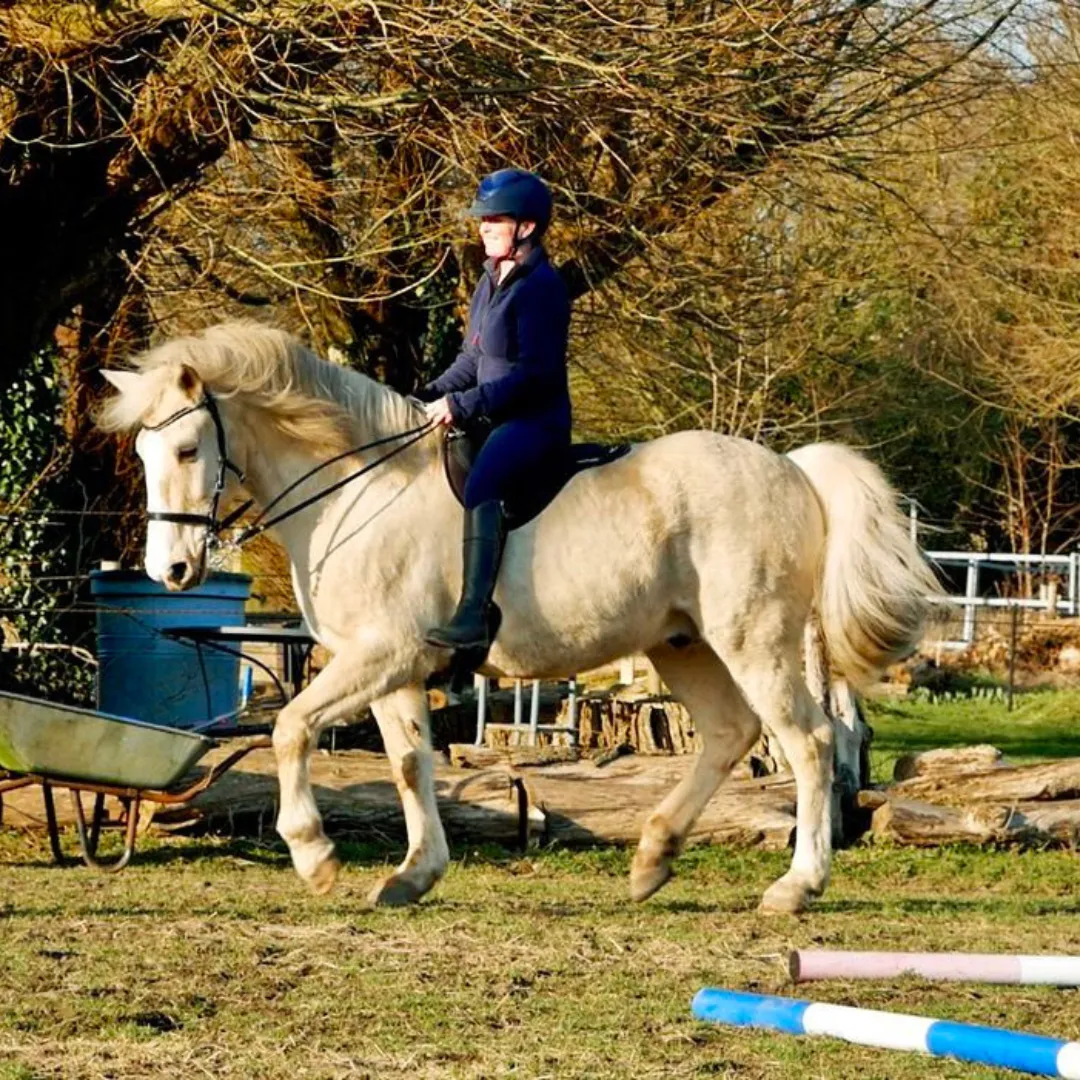
"I feel liberated. We've been stuck in the local equestrian centre for most of our schooling sessions, now I can benefit from riding in other environments and places."
Zaria & Amigo

How to calm a tense horse
Riding or even leading a tense horse can feel like being with a ticking bomb, if anything happens you’ll be headed across the arena fast! 💣💥
This doesn’t make for a nice relaxing ride, and can mean that your world gets smaller and smaller as you desperately try to control or avoid all the things that could possibly set your horse off!! 🥺
Horses are naturally scared animals they live on their nerves and emotions. Their primary safety mechanism is to run away so tension can happen when that is restricted in any way.
Unfortunately our primary safety mechanism is to control a situation and want to stop so we are opposites in what we think is safe. The horse wants to do exactly what we don’t want and we want to do exactly what the horse doesn’t want!
Before we go too far into techniques, it's important to take a moment to think about why our horse is tense in the first place. Could that tension be due to pain or discomfort? If so, then training is not going to help.
If it's more of a trigger stacking situation where your horse is building up more and more tension because of the environment, or something going on then these exercises will give rid of that tension and teach your horse to be calmer…
1️⃣2️⃣3️⃣ Rhythm & Relaxation 1️⃣2️⃣3️⃣
Whether on the ground or on the horses back the first 2 scales in the scales of training are a great step to achieving a calm horse I like to call this 'Relaxation in Motion'.If you can teach your horse that relaxation is what you want and reward it then your horse is more likely to look for it and start to enjoy being there
Horses learn when you stop doing something so if you stop when your horse is still tense then all you’ve taught him is how to be tense for longer. However, if you stop and take a break when your horse has found some relaxation, you’re on your way to a consistently calmer horse 😇
Signs that your horse is finding relaxation in motion are:-
Head lowering and neck relaxing, even for a moment means he’s trying
Blowing out through his nose (not excited snorting!!!) mean’s he’s starting to breath more deeply
Swinging tail, starting to relax and swing through the back
♾️ Changes of direction ♾️
For some horses just riding in one gait to find relaxation in motion doesn’t work at all and get’s them more and more wound up. These are the ones that end up doing the ‘wall of death’ with arena surface flying up in clods!! 🐎
For these horses changes of direction work really well as they allow them to move their feet but keep them focussed. If you make your circles really small they don’t have the opportunity to get faster and faster.
These small turns can be done on the ground or on the horses back. As your horse relaxes you can make the circles bigger until you can go for longer without your horse speeding up or getting worried.
👯♀️ Sideways or lateral moves 👯♀️
Sideways or lateral manoeuvres can also be useful for these horses as a way of allowing them the movement they need to work off their nervous energy in a controlled way.
What’s important here is that when you are riding your lateral move that the horse bends his body from your leg (often referred to as ‘bending through the ribs’). A horse can bend his neck and stay tense through his body which won’t help in the slightest. They need to bend through their whole body to find relaxation, become calmer and start to breathe deeply.
As with the previous exercises, you can test their effectiveness by going straight again and seeing if your horse can stay relaxed or they tense up again.
🤚 Stopping ✋
I have focussed more here on patterns that involve movement as these horses usually need to move until they find some sort of relaxation and trying to ask them to stand still is often too much and can even wind them up!
However, when they do start to come down it’s important to give them some stand still time so they can start to process. Look for signs that they are becoming more relaxed to see if what you’re doing is working.
Signs of relaxation in your horse at a stand still:-
Licking and chewing
Yawning
Blinking
Head below the withers
Blowing out through his nose
Finally, one of the most important things with horses that get tense, is to consistently monitor their emotions.
The better you get at spotting the first moments that your horse gets tense and doing something about it, the less likely your horse will escalate into more extreme or dangerous behaviours.
Happy riding
Lyla 🦄💞
Before trying any training technique it is important to rule out pain or discomfort. Saddle fit, teeth, back, hoof balance and lameness issues should all be checked by a qualified professional before applying any training.
If you have questions or need idea's to help with a specific problem feel free to get in touch with me on [email protected]
Lyla has been helping riders and their horses in the UK, USA and Europe for over 15 years. She has prepared horses for crowds of over 6,000 people with no calmers or ear plugs for venues including Birmingham NEC, Aintree, Bury Farm EC and Hartpury.
Lyla specialises in horse psychology and behaviour problems with a specific interest in dressage and has worked with horses from grass roots to Grand Prix across the UK and Europe including international competitors and Olympians from Spain, the US, Canada and the UK.
See www.lylacansfield.com or email [email protected] for more details.
All training techniques discussed are from experience only, it is impossible for to accurately advise on horse/rider combinations without seeing them live. Lyla Cansfield & Equine Mind & Body Training strongly advise anyone considering using any of the techniques discussed to get live help and can take no responsibility for the outcome of applying any of the techniques discussed with or without supervision. Riding is a high risk sport.
